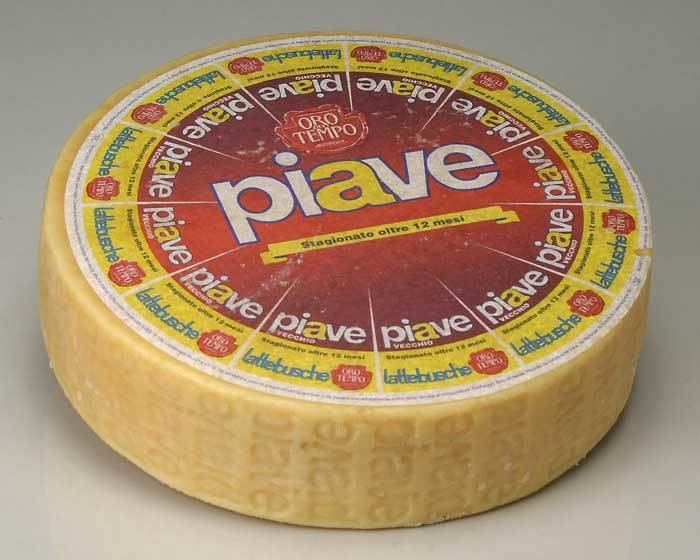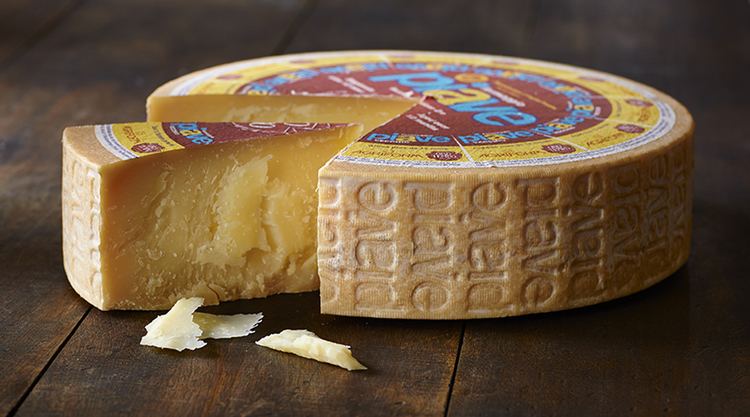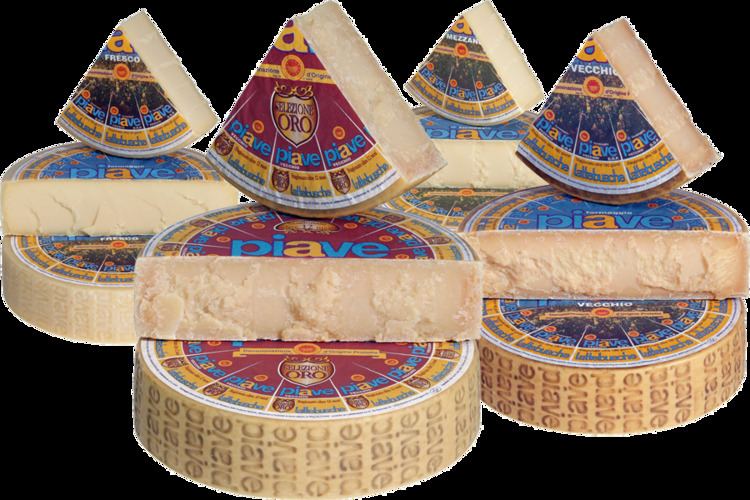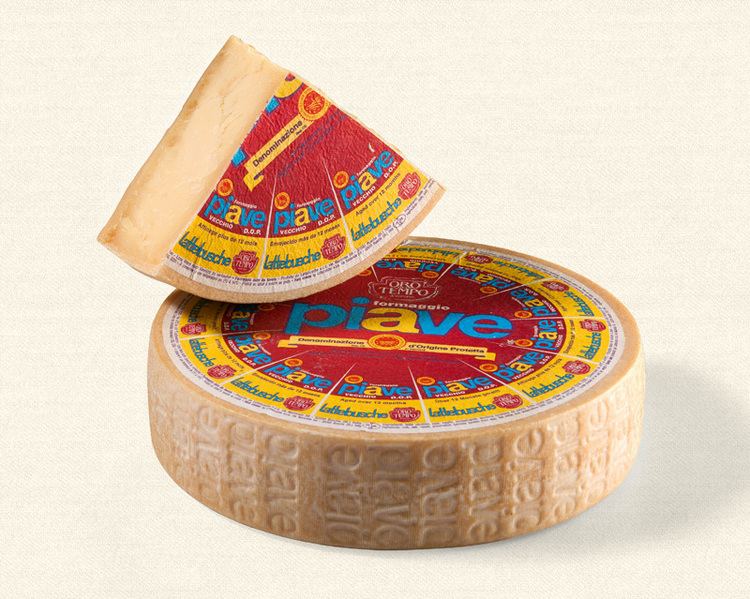Source of milk Cows Certification PDO 2010 | Texture Hard | |
 | ||
Other names Piave FrescoPiave MezzanoPiave VecchioPiave Vecchio Selezione OroPiave Vecchio Riserva Similar Montasio, Monte Veronese, Raschera, Morlacco, Bra cheese | ||
Piave is an Italian cow's milk cheese, that is named after the Piave river. As Piave has a Protected Designation of Origin (Denominazione di Origine Protetta or DOP), the only "official" Piave is produced in the Dolomites area, province of Belluno, in the northernmost tip of the Veneto region.

Piave is a hard, cooked curd cheese, offered at 5 different ages:

Piave cheese has a dense texture, without holes, and is straw-yellow in hue. It has a slightly sweet flavor. Once fully aged, it becomes hard enough for grating, and it develops an intense, full-bodied flavor.
Piave's rind is impressed repeatedly in vertical direction with the name of the cheese.

Piave is sold throughout Europe and even in the US as a hard cheese at which point its taste resembles that of a young Parmigiano Reggiano. The red label is aged at least 1 year and is called Vecchio (Piave Vecchio Selezione Oro), while the blue label is softer. Both are available all over Europe and can also be found in the US, primarily at specialty shops.

